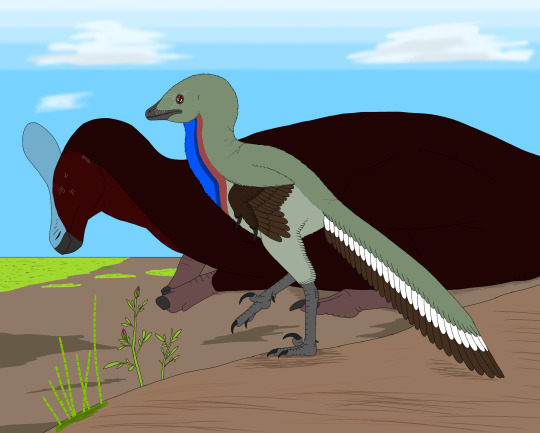#Pararhabdodon
Explore tagged Tumblr posts
Text

Pararhabdodon isonensis from the Late Cretaceous (Maastrichtian, 66 Ma), Spain It's the end of the dry season and the sky carries the upcoming rain on a late afternoon.
#paleoart#palaeoart#art#dinosaur#dino#prehistoric#paleontology#palaeontology#digitalart#Pararhabdodon#Pararhabdodonisonensis#Tsintaosaurini#Lambeosaurinae#Hadrosauridae#Hadrosaur#Ornithopod#paleoblr#digital art
207 notes
·
View notes
Text

Tamarro with sleepy Pararhabdodon.
7 notes
·
View notes
Link
0 notes
Link


An article published in the journal "PLOS ONE" offers an ontogeny and taxonomy of the remains of hadrosaurids discovered in the Basturs Poble site, Spain. A team of researchers led by Víctor Fondevilla of the Institut Català de Paleontologia Miquel Crusafont (ICP) and the Universitat Autònoma de Barcelona (UAB) examined 270 fossils that could all belong to the same species, Pararhabdodon isonensis, and lived about 70 million years ago. The presence of very different specimens offered a lot of information on the life cycle of this duck-billed dinosaur.
0 notes
Text
Pararhabdodon isonensis

By Jack Wood on @thewoodparable
PLEASE support us on Patreon! We really do need all of your support to keep this blog running - any amount helps!
Name: Pararhabdodon isonensis
Name Meaning: Similar to Bar Tooth
First Described: 1993
Described By: Casanovas-Cladellas, Santafé-Llopis, & Isidro-Llorens
Classification: Dinosauria, Ornithischia, Genasauria, Neornithischia, Cerapoda, Ornithopoda, Iguanodontia, Dryomorpha, Ankylopollexia, Styracosterna, Hadrosauriformes, Hadrosauroidea, Hadrosauridae, Lambeosaurinae, “Cristohadria”, Tsintaosaurini
Pararhabdodon is a close relative of Tsintaosaurus, which is one of the weirdest and best known of the Hadrosaurs. Sadly, its skull is not known, so though it might have had a similarly elongated and interesting crest as Tsintaosaurus, it is hard to know for sure what the shape of its crest would have been like. Still, it is reasonable to suppose it had a crest based on its phylogenetic position, and that the crest would have been used for some form of communication (visual and/or auditory). It is known from two individuals but fairly scattered material from both, and was originally thought to be a rather early derived Hadrosaurid before later analyses had it together with Tsintaosaurus. It was found in the Tremp Formation in Spain and France, living about 67.5 to 66 million years ago in the Maastrichtian age of the Late Cretaceous, making it another of the weird Hadrosauroids known from Europe. It would have been around 6 meters long when fully grown and had a tall back like other hadrosaurids.
Source:
https://en.wikipedia.org/wiki/Pararhabdodon
Shout out goes to @awkwardswinters!
#pararhabdodon#pararhabdodon isonensis#dinosaur#hadrosaur#paleontology#prehistory#prehistoric life#dinosaurs#biology#a dinosaur a day#a-dinosaur-a-day#dinosaur of the day#dinosaur-of-the-day#science#nature#factfile#awkwardswinters#Dìneasar#डायनासोर#ديناصور#ডাইনোসর#risaeðla#ڈایناسور#deinosor#恐龍#恐龙#динозавр#dinosaurio#공룡#דינוזאור
40 notes
·
View notes